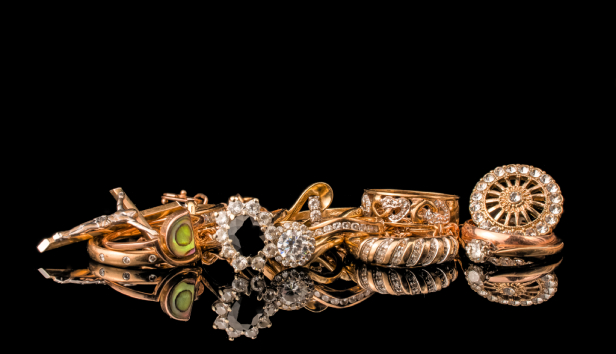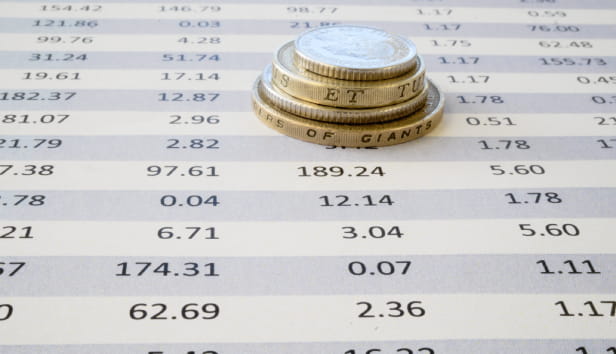.jpg?la=en&h=625&w=1440&hash=6D2CE4CFC1157076E738FBC797E006A7)
This article is for general guidance only and is not financial or professional advice. Any links are for your own information, and do not constitute any form of recommendation by Saga. You should not solely rely on this information to make any decisions, and consider seeking independent professional advice. All figures and information in this article are correct at the time of publishing, but laws, entitlements, tax treatments and allowances may change in the future.
You would be forgiven for thinking that Capital Gains Tax is something only the super-wealthy need to worry about.
However, recent reductions to tax-free allowances on the money we make from our investments, property and, in some cases, possessions – mean more of us are going to start getting hit.
To help you understand whether you’ll need to start paying the tax, we'll explain what capital gains tax (or CGT) actually is, how it works and when it’s charged.
What's on this page?
You may be liable to pay Capital Gains Tax (CGT) when you sell or give away (known as disposing) certain things that have increased in value (known as assets).
However, Shaun Moore, Tax and Financial Planning Expert at Quilter, points out your tax bill won’t be based on the total proceeds of the asset – it will only apply to the increase in its value, or the profit you’ve made, since you’ve owned it.
This is referred to as your ‘gain’.
“For example, if you purchased £12,000-worth of shares and sold them at a later date for £20,000, the £8,000 gain could be subject to CGT,” he says.
You don’t have to pay tax on all the profits you make – but, unfortunately, the gains you can enjoy free of tax have shrunk rapidly in recent years.
Moore explains: “Until [April 2023], you didn’t have to pay CGT on any yearly gains below £12,300, known as the Annual Exempt Amount (AEA).
“However, from this tax year onwards (2024/25), the AEA has been reduced to £3,000.
“This will bring hundreds of thousands of people under the CGT umbrella for the first time, so it is advisable to check before you sell any assets of considerable value to avoid being left with a nasty surprise at the end of the tax year.”
CGT can be charged on an array of assets including investments, property – although not your main home – and chattels.
Chattels is a fancy word for moveable and tangible possessions you might have, such as furniture, antiques, art or jewellery. But for the purposes of CGT, you only need to consider chattels worth more than £6,000.
Moore adds: “Some personal possessions are exempt from CGT, however, such as private cars, and anything with a limited life span including things like antique clocks and watches.”
He says over 50s will mostly likely pay CGT on financial assets, like shares and investments, if they aren’t held in ISAs or pensions that shelter your money from tax.
“Besides financial assets, people in later life are [also] likely to be subject to CGT when selling property,” he adds.
“Whilst your first home is typically exempt, you may have to pay CGT if you profit from the sale of a holiday home, a buy-to-let property, land, or an inherited property.”
The rate of CGT you pay will depend on your rate of income tax.
If you still fall within the basic rate tax bracket once your taxable gain has been taken into account (so your total income plus your taxable gain is below £50,270), you will be taxed at a rate of 18%.
Higher or additional rate taxpayers will be taxed at a rate of 24%.
The same rate now applies regardless of the type of asset you are selling. Prior to 30 October 2024, a higher rate of CGT was charged on the sale of residential property. (The rate charged on residential property hasn’t been cut, rather the rate of CGT on other assets was increased in the Autumn 2024 budget to align with the property rate.)
If you’re unsure about this, you can read the UK Government’s guidance on income tax rates, or consider speaking to a tax advisor for clarity.
.jpg?sc=max&mw=800&h=450&la=en&h=731&w=1300&hash=008510ACADB609085843D12396F0537E)
Calculating gains on single assets – like property, for example – isn’t too complicated.
Chris Springett, Tax Partner at professional services firm Evelyn Partners, says: “A capital gain is basically what you sold an item for, less what you paid for it and some expenses (such as transaction or estate agent fees, or money spent on improving the asset).
“The key to calculating this is keeping good records when you purchase an asset or spend money on improving it.”
If it was an asset you inherited, rather than purchased, the CGT calculation will be based on its market value at the time you took ownership.
It’s not quite so straightforward with shares. This is because you may well have acquired them over a period of time at different prices, so you’ll need to calculate an average cost.
Springett adds: “Shares can be tricky, as shares of the same class in the same company are not regarded as individual assets, but rather the group of shares is regarded as one asset.
“Subject to some exceptions, the cost of each share is added together to give one overall pooled cost.”
The government website includes lots of straightforward guidance on how to calculate gains on shares, including working out the value of each share when selling.
It’s also got helpful information if you’re trying to understand how much property and chattels are worth when it comes to CGT.
However, if you have sizeable gains or more than one taxable asset, it will likely make sense to get professional advice.
If you sell an asset and have made a taxable gain, you’ll need to declare it to HMRC. Tim Stovold, Head of Tax at accountancy firm Moore Kingston Smith, says:
“If you have disposed of an asset and CGT is due, this is declared on your personal self-assessment tax return, due to be submitted on, or before, 31 January following each tax year.
“For residential property, you may be required to file an additional return within 60 days of selling the property.”
Once you’ve submitted your return, the next step is to pay any tax required. The deadline for this is similar to that of the return, so it makes sense to complete the necessary self-assessment as soon as possible.
“For most assets, the CGT is payable on or before 31 January when the tax return is submitted,” adds Stovold. “But for residential property [sales, where CGT must be paid], the payment is due 60 days after the property sale.”
If any of your assets have grown in value, it’s important to check whether CGT could become payable if you’re thinking of selling.
Failure to declare gains, or pay the tax that’s owed, could see you end up with a hefty fine from HMRC, so it’s important not to bury your head in the sand.
But, even if you have no plans to sell, it’s still important to take stock – especially if you have multiple assets.
“It's worth remembering that gains can accumulate over the years, which can leave people exposed to high levels of CGT if they are not careful, even with modest yearly gains,” says Moore.
Take the example of someone who has made yearly profits of £1,000 in an investment account (well below the tax-free allowance) for eight years, he says.
"If they chose to sell off all their shares in this tax year, the profits would be classified as an £8,000 gain for the tax year 2024/25, as profits are only “realised” for tax purposes once the asset has been sold.
“This means that they would only benefit from the Annual Exempt Allowance once and pay CGT on the remaining £5,000 gain.”
So, while a one-off CGT calculation on a single asset should be straightforward, Moore says it can be complicated and time-consuming if you’ve built up multiple assets over the years.
“It may be worthwhile seeking professional advice from a financial adviser, who can help to calculate your CGT bill - and perhaps even reduce it through efficient tax planning.”


We're here to help you make the most with your money. With a rage of financial services designed with over 50s in mind.

.jpg?la=en&h=354&w=616&hash=653168623B92F3457D40ACA115D37B3E)
.jpg?la=en&h=354&w=616&hash=DF845FE6DE9798B89724CB777DB917B3)

Our guide explains how ISAs provide tax-free growth for your savings and investments.

